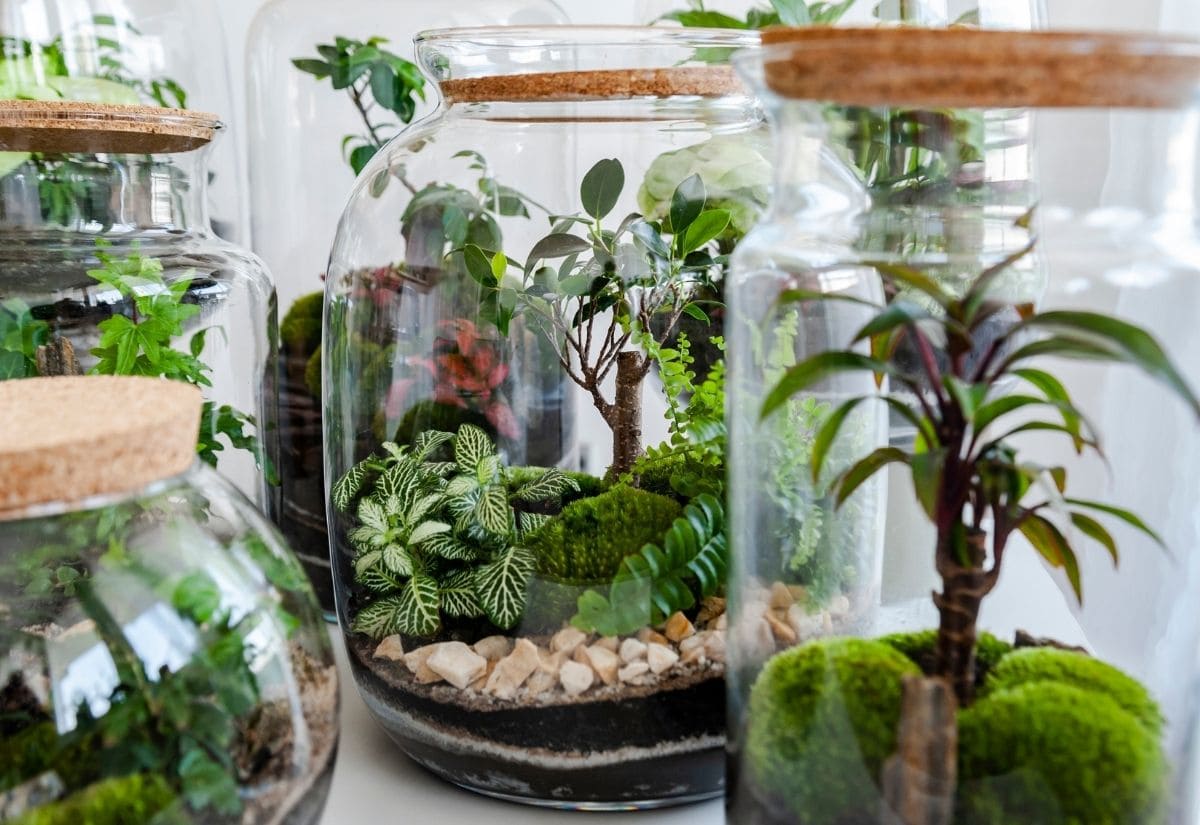
Terrariums are plant-filled glass containers, with or without a transparent lid, are generally decorated with mixed plantations of miniature plants, creating a bubbles of greenery.
Essentially a mini and self-contained plant ecosystems growing in a glass jar. They’ve taken the gardening world by storm, and it’s easy to see why.
Maybe because you can play with the colors of the grass, of the plants and even of the soil and gravel? Maybe because you can grow your plants in decorative glass containers?
Maybe because they are miniature gardens, and they can look very exotic? Maybe because you can express your artistic qualities?
Whichever the reason, the fact is that terrariums are easy to install, low-maintenance and beautiful decorative object for bringing a touch of greenery to your interior.! But not all plants are suitable for your terrarium…
So, what plants grow well in a terrarium? In terrariums, you need to use slow growing miniature plants, visually striking and original houseplants and also plants that will adapt to the shape and opening of your terrarium. Many succulents, insectivorous plants and small houseplants are suitable.
Then, you should know that not all terrarium models correspond to all plants. So, choosing the best terrarium plants will depend on whether your terrarium is open or closed.
Open terrariums are ideal for plants that prefer arid, dry conditions like succulents, air plants and cacti. On the other hand you should build your closed terrarium using tropical plants that love humidity and heat like mosses, epiphytes, ferns, carnivorous plants and some ornamental plants like the fittonia.
Depending on these conditioning options, the choice of plants and maintenance will be different.
So, just read on and find which plants you can “mix and match” in your open or closed terrariums to turn that empty glass vessel into a wonderful small garden!
Types of Terrariums
First of all, you need to know that there are different types of terrariums. Of course, the shape, depth and color make a difference, but in practical terms what matters most is the opening.
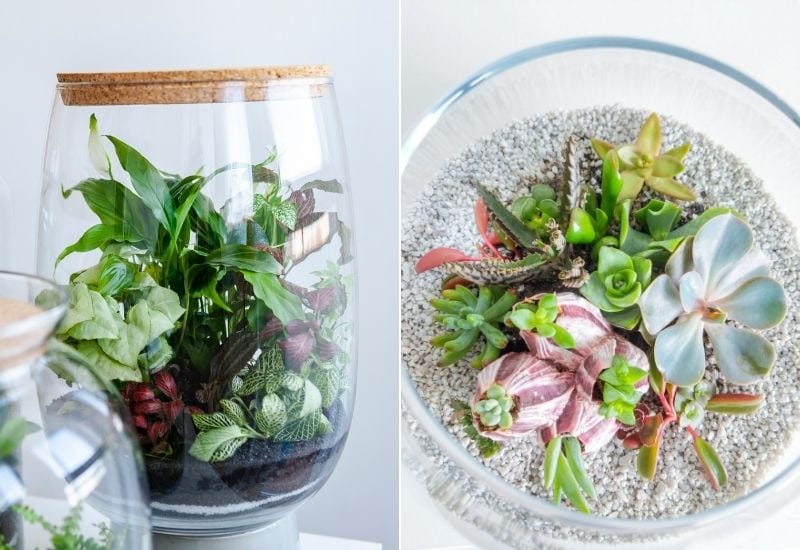
Also the depth of the terrarium is important though; shallow terrariums are not suitable for plants that do not like their “feet” wet, like succulents. Stagnant water can cause root rot and spell the death of your little green friends.
So, choose your container carefully, or, if you already have one you want to recycle, choose your plants carefully!
How to Make a Terrarium
Making a terrarium is quite simple. You will need to start from the bottom and build up from there…
That’s it!
Last but not least, get your children to join in, as making a terrarium is a fun and educational activity!
20 Stunning Plants That Thrive in Open or Closed Terrariums
I’ve divided the species up by closed and open lid terrarium plants. To help you decide on which plant is the best fit, take a look at each one’s appearance, water intake and sunlight needs.
Here are 20 of the most beautiful pants that grow well in terrariums
Closed (Humid) Terrarium Plants With Names And Pictures
If your terrarium has a small opening, you can only grow plants that like lots of humidity, which will accumulate in it, as it will not have good ventilation. Here are some low care plants to consider when planting your own closed terrarium.
1. Nerve Plant (Fittonia Spp.)
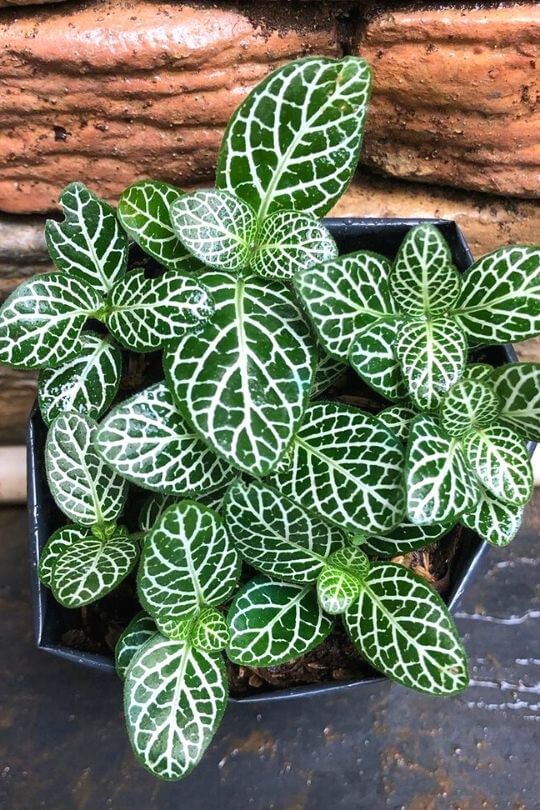
The leaves of nerve plant have an amazingly decorative pattern of bright colors; the veins, in fact, can be white, pink, purple, red or yellow, while the rest of the leaf tends to be green, but it can also be lime green, blue or dark blue green!
The combinations are almost infinite, and each has its own mood, but they are all eye catching.
The elliptical leaves of these small houseplants come in opposite pairs on short stems and they will certainly add color and liveliness to your terrarium.
Nerve plant will also produce thick spikes with beautiful, if small, white flowers to add to the visual effect of your garden in a glass bowl.
2. Baby’s Tears (Soleirolia Soleirolii)
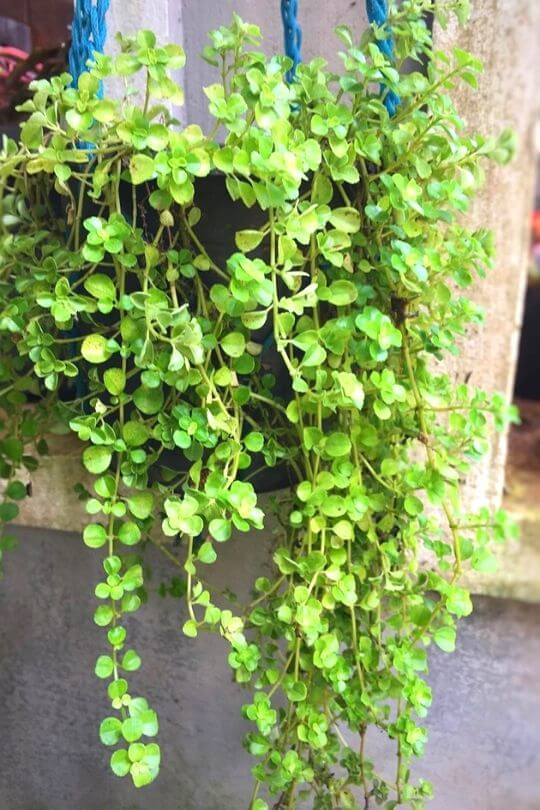
How can you do without a trailing plant with rich foliage draping over your terrarium?
It is a visual effect that links the small “garden in a bottle” to the outside space and which adds interesting dynamics to the ensemble, even highlighting the beauty of the vessel.
A plant that does this perfectly is baby’s tears, whose branches have many tiny light emerald green round leaves that your terrarium really can ‘t do without!
3. False Shamrock (Oxalis Triangularis)
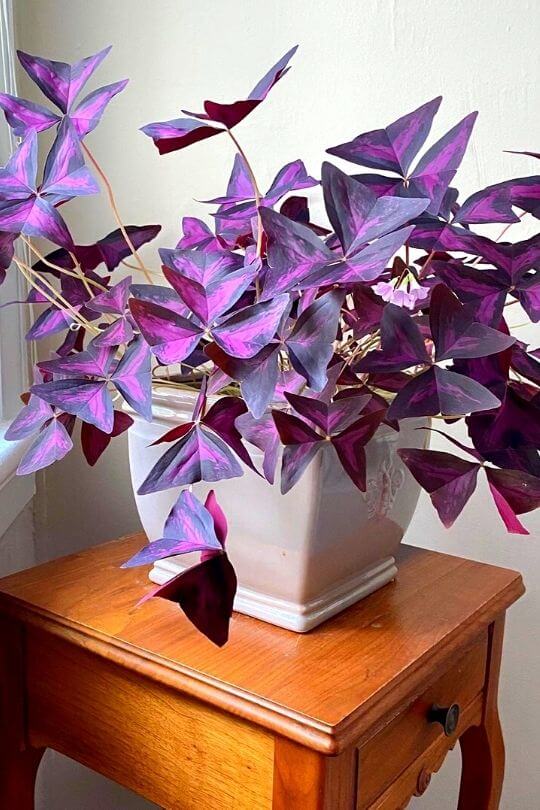
The three, triangular, dark and deep magenta leaves on each thin stem of false shamrock will look like parasols, or weird magic mushrooms in the small context of your terrarium.
At close range, these beautiful leaves have thin veins that make them look like butterfly wings…
So, for a fairy tale touch, or just to add the depth and passion that magenta and purple bring to any composition, this is a wonderful plant for your terrarium.
And you won’t regret it when delicate, light pink purple flowers will pop their heads above the foliage.
4. Venus Flytrap (Dionaea Muscipula)
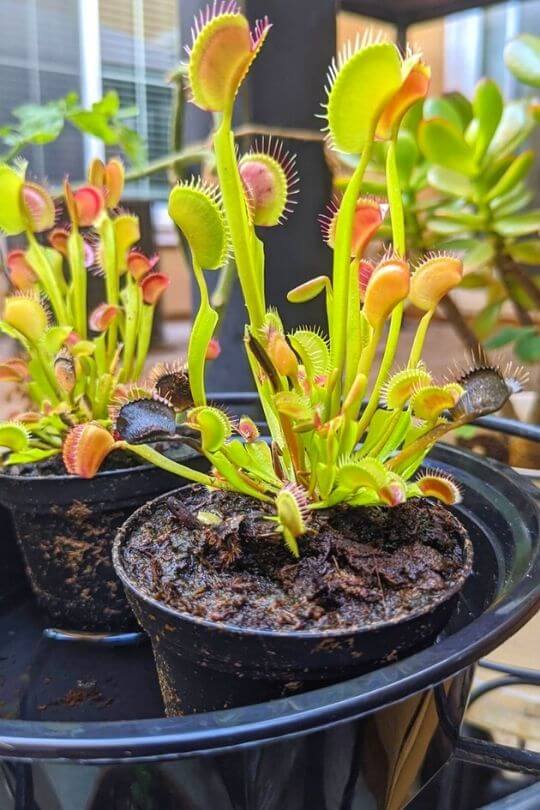
Close terrariums are a good environment for insectivorous plants, and they are sure to wow your guests!
And what better choice than the classical Venus flytrap, with its exotic look, weird appearance and strange behavior?
Famous for closing its modified leaves when insects happen on them, like red mouths.
It is also very decorative, thanks to the red color of the trap leaves when open and the “teeth” or cilia around them. And they do blossom too, with beautiful white flowers with green veins in them!
5. Frosty Fern Spike Moss (Selaginella Kraussiana)
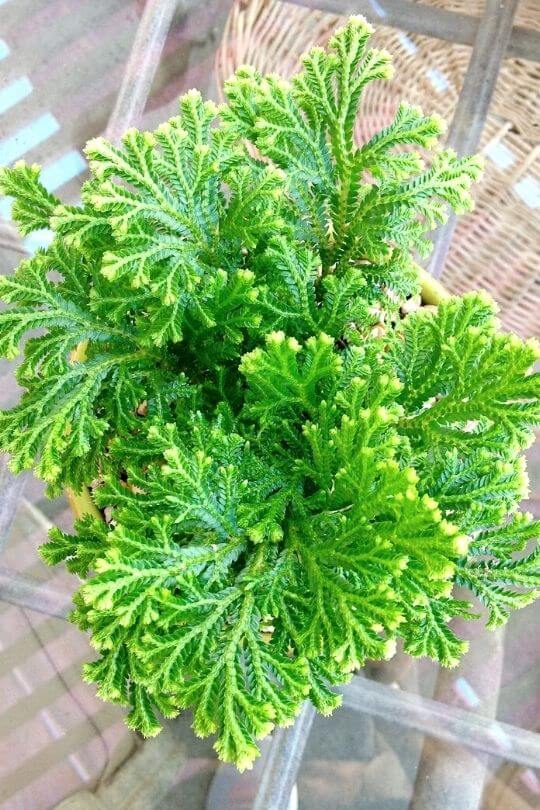
If you are considering a “temperate forest” look for your terrarium, with lots of frond like, rich and lush green branches, then frosty fern spike moss has amazingly rich, green foliage that looks a bit like moss, or a dense conifer branch, reminiscent of that of a cypress.
With a round habit and many green branches covered in loads of thin and long tiny leaflets, this plant can bring rich texture and a sea of green to your composition.
6. Indian Holly Fern (Arachnoides Simplicior)
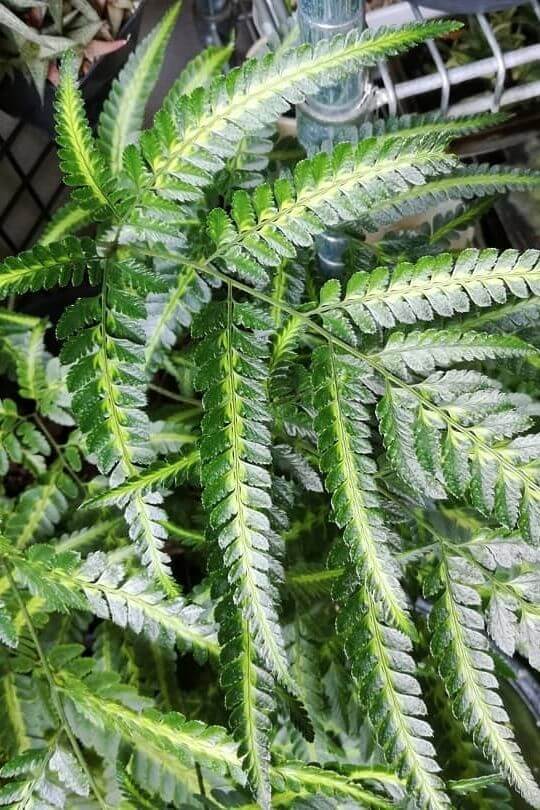
Long stems with fronds of many on the sides, each looking like the feather of a bird, with many leaflets making up the overall shape make Indian holly fern an astounding houseplant that would look great in a terrarium, and in fact it’s hard to work out why this green beauty is not still little known.
The leaves are dark green with a lighter color towards the stems, which highlights the dynamic shape of this plant’s foliage, while the overall shape and habit is that of a fern, which makes it ideal for “forest and shade inspired” composition.
7. Australian Pitcher Plant (Cephalotus Follicularis)
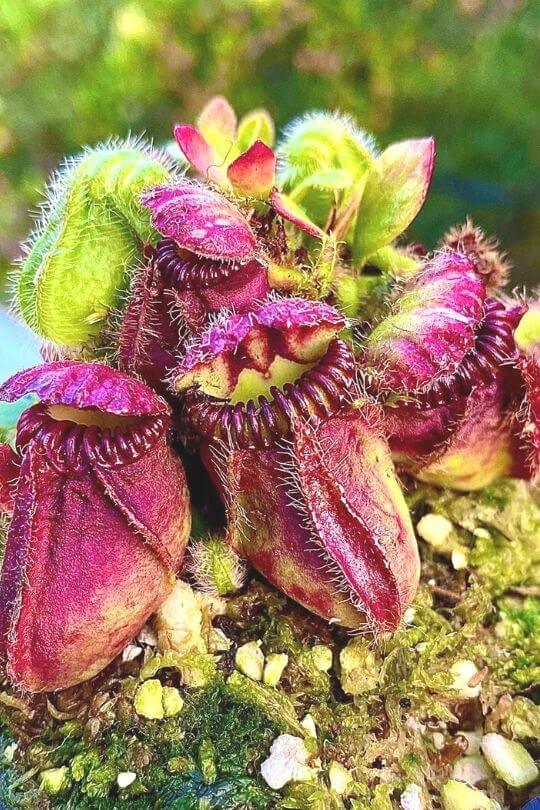
A child charmer like Australian pitcher plant would make your terrarium look exotic, unique and even otherworldly!
With its large, waxy, sculptural pitchers or the most amazing color combinations, it looks more like an ancient vase or urn than a plant, in fact.
They can be green, purple, red and even violet, often with stripes and decorative patterns, and with a lid (operculum) that turns this insectivorous plant into a strange talking character from a fantasy book or movie.
8. Spiderwort (Tradescantia Virginiana)
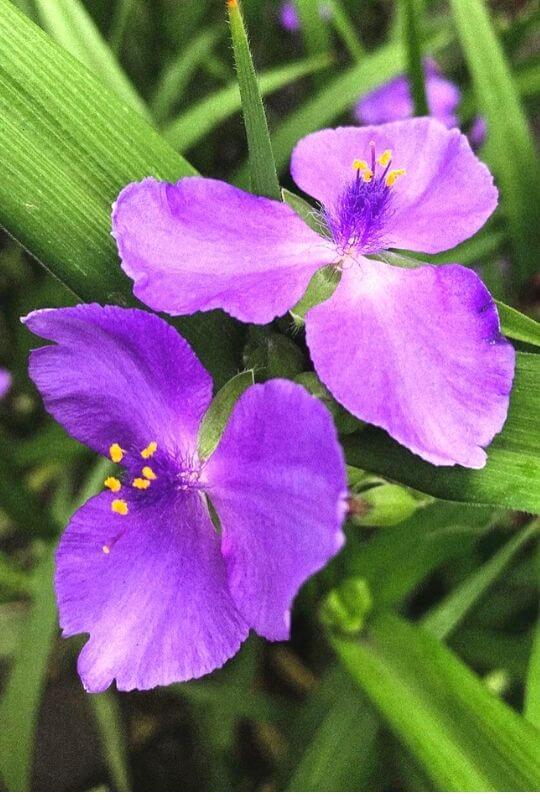
A popular flowering plant for terrariums, spiderwort is a perennial with long and thin blade like leaves that grow upright then arch downwards, of a bright green color that fills with brightly intense violet blue flowers with three petals from late spring to midsummer.
Relative of the succulent Tradescantia pallida, spiderwort is actually an herbaceous houseplant that likes humidity, which makes it perfect to bring beautiful blooms to your closed terrarium.
9. Strawberry Begonia (Saxifraga Stolonifera)
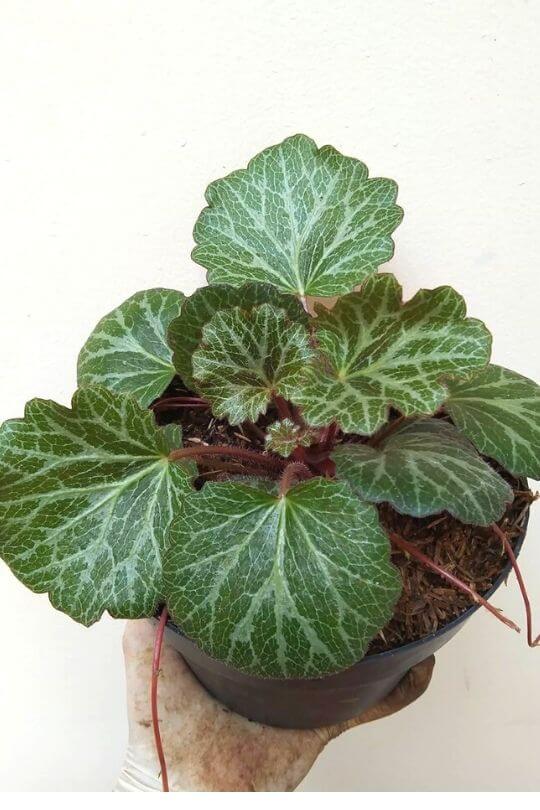
Fill your terrarium with beautiful, lobed, dark hunter green leaves with light green veins that grow horizontal to the ground like tiny shades for fairies, but don’t forget to leave strawberry begonia a lot of headroom, as the flower bearing stems will grow slender and tall, and well spaced white and purple pink flowers will blossom like floral ballerinas or butterflies dancing in the air.
While it loves humid places, it will also adapt to a dry (open) terrarium.
10. Tropical Pitcher Plant (Nepenthes Spp.)
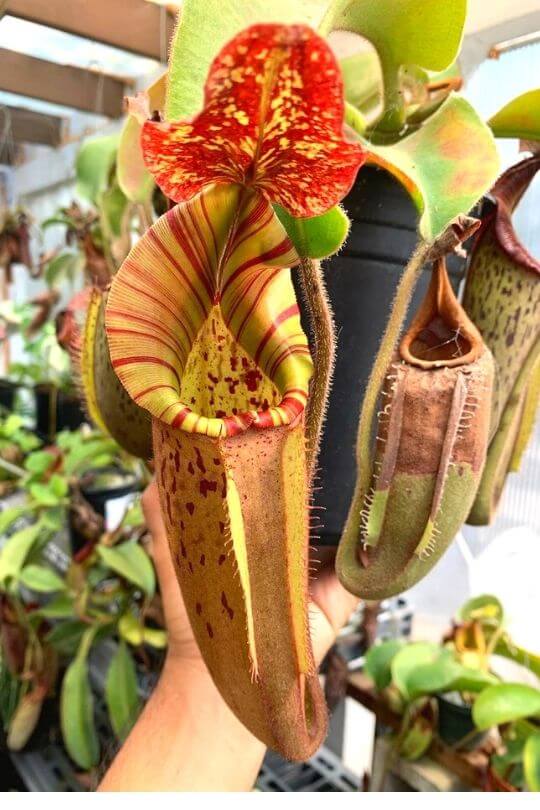
For a wow factor, tropical pitcher plant, on top of glossy, long green and rounded leaves, tropical pitcher plant also adds hanging pitchers that can be of the most amazing colors: red, purple, orange, green and in many combinations.
The pitchers can be of different shapes and sizes according to the species, but if you are after a small plant, Nepenthes ventricosa grows to a maximum of 8 inches (20 cm) tall, and it offers pitchers with a large light green bowl at the bottom and then a neck that turns bright purple red towards the mouth (peristome).
A sure hit with children and a great topic of conversation with guests, tropical pitcher plants can turn your terrarium into an exotic botanical garden with their originality and showy appearance.
Open (Dry) Terrarium Plants
The range of plants you can grow in an open (or dry) terrarium is bigger, because you don’t have the problem of high humidity.
The most popular are succulents, but there are other houseplants you can use as well and here are some of the most beautiful for you to choose from.
11. Old Hens And Chickens (Echeveria Secunda)
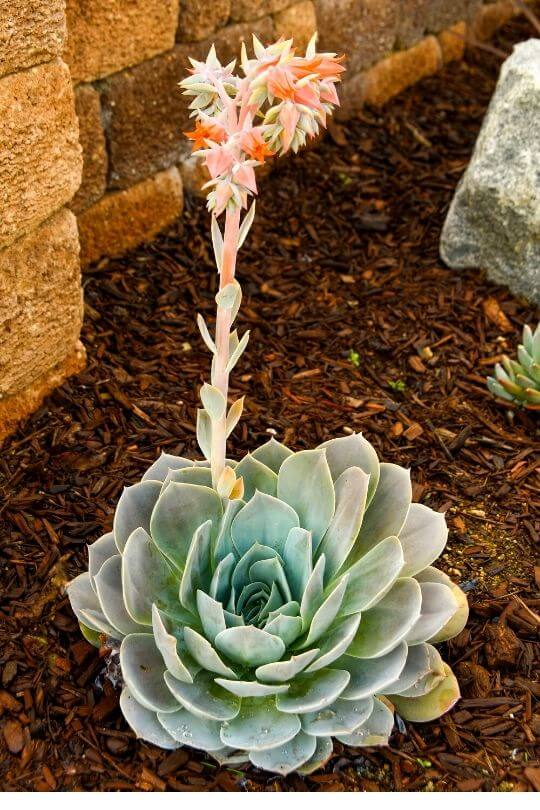
For a smart, harmonic, sculptural look, old hens and chickens is the perfect houseplant. In fact, it has marble looking blue petals marked by a small, but decorative pointed tip, precisely arranged in a rosette that looks like a geometrical masterpiece, like the rose window of a gothic cathedral or an abstract sculpture.
This small size Echeveria is ideal for formal, artistic and even futuristic compositions, also thanks to the distinctively soothing and gem like color of its leaves.
12. Red Pagoda (Crassula Capitella)
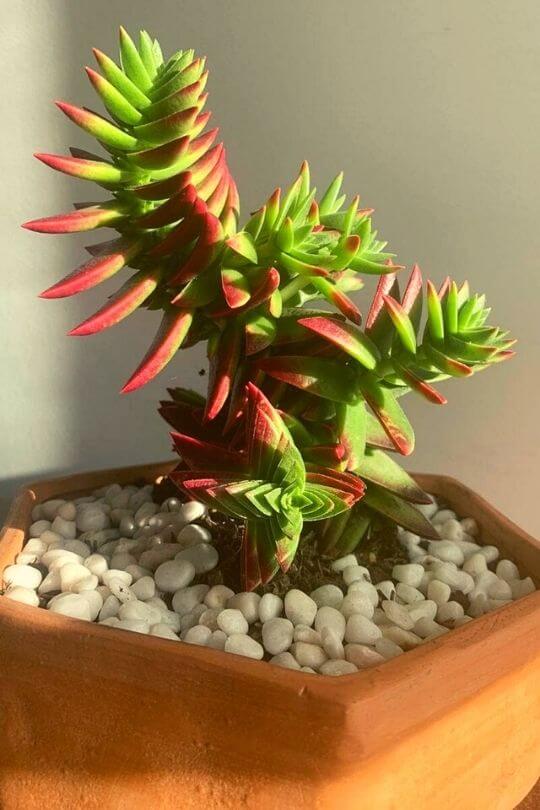
You can create an oriental looking garden in your terrarium with red pagoda, a small succulent that has, along upright stems, geometrically arranged triangular leaves that look like the roof of a Japanese pagoda!
Light green at the base, these leaves turn bright crimson at the tips, giving you a striking but very architectural contrast.
13. Polka Dot Plant (Hypoestes Phyllostachya)
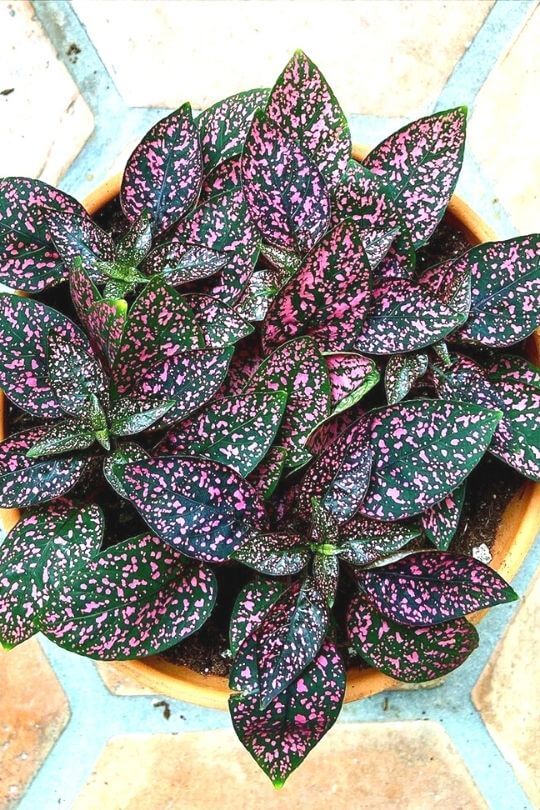
If you want an impressive display of colors all year round in your terrarium, polka dot plant offers you leaves of a multitude of colors.
In fact, the leaves have a base color and then lots of dots of a different shade, sometimes even very bright.
Any combination of green, pink, magenta, white and red is possible on the beautiful lanceolate leaves of this tiny evergreen shrub.
14. Zebra Cactus (Haworthia Attenuata)
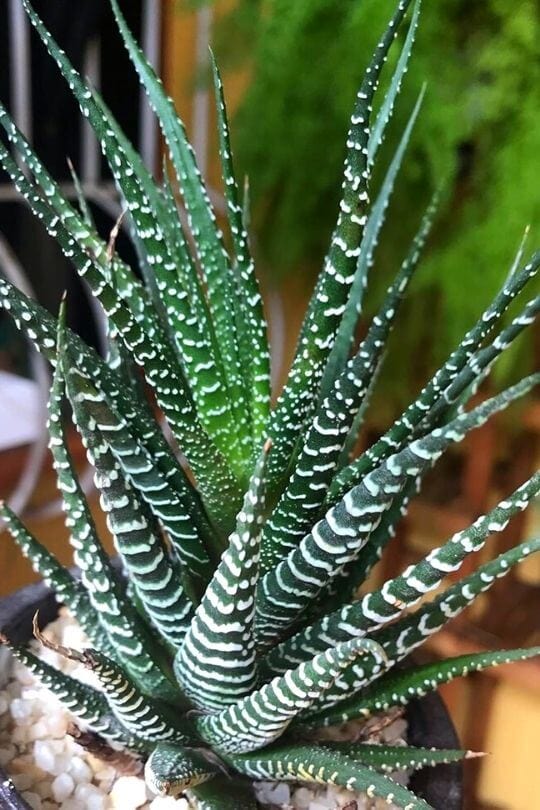
Imagine a tuft of dark green, long, succulent upright and dark green leaves with white stripes, which bend slightly like the flames of a surreal fire in your terrarium…
Zebra cactus is an unusual looking plant with few demands and a striking look to offer you.
15. Starfish Plant (Cryptanthus Bivittatus)
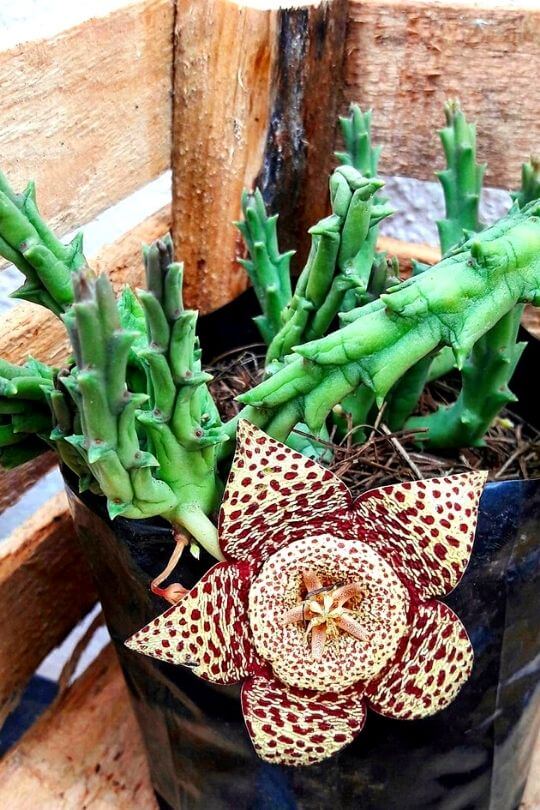
For a surreal marine theme in your terrarium, starfish plant cannot be forgotten. It forms rosettes of long, pointed and wavy fleshy and glossy leaves that look like starfish from a cartoon, as they are striped with purple pink on the outside, then light cream to grey green, and at the center it has a dark green stripe as well.
It has a very lively and playful character, and is small enough to fit into a salad bowl.
16. Air Plants (Tillandsia Spp.)
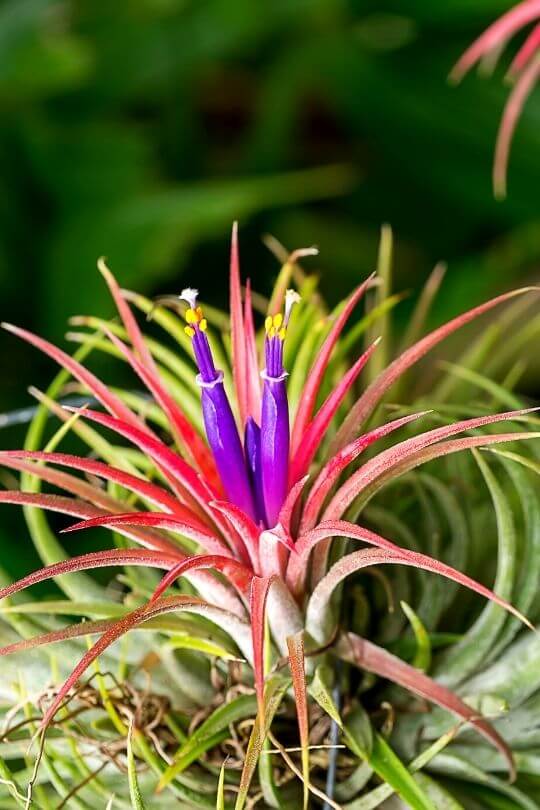
Terrariums are they places where you can let your gardening imagination run wild, and air plants are so weird and alien looking that you can’t do without one if you are after the wow factor…
With their long, often curly or spiraling, leaves, and beautiful central tufts, these plants literally grow in air, and they make perfect choices for even the simplest type of terrarium: an open bowl hanging from the ceiling…
17. Button Fern (Pellea Rotundifolia)
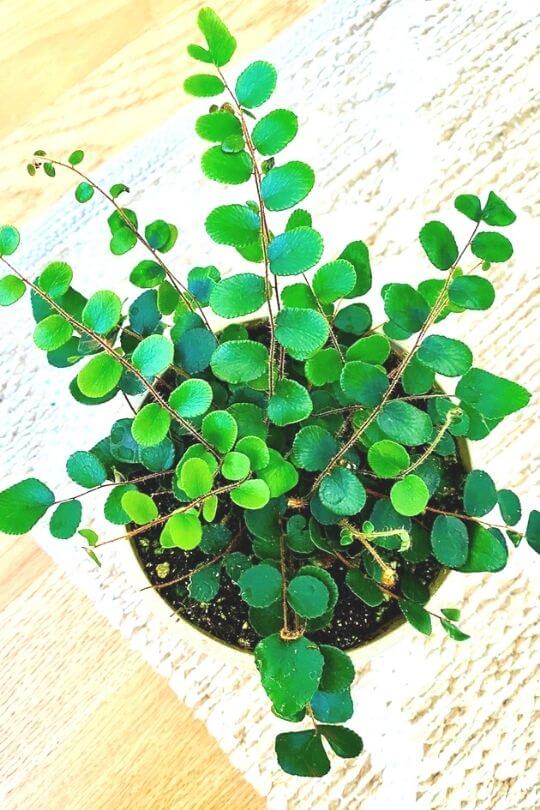
Button fern is excellent to bring light green and lush foliage to even a small terrarium.
With its long and slender brown stems adorned by regular, oval leaflets that look will like a fairy staircase to a child, this little but string fern is a safe choice for dry terrariums, as it is drought resistant.
So, with button fern you can have the “leafy look” even in a dry setting, and without much watering, and you can even use it as backdrop to succulents to make a produce a nice contrast.
18. Living Stones (Lithops Spp.)
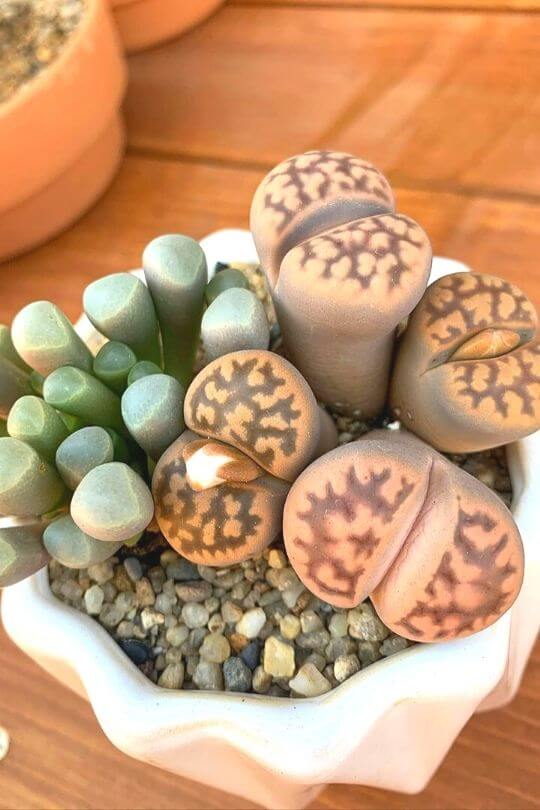
Arguably the best plants for small and dry terrariums, these wonders of Nature look like colorful pebbles rather than actual plants, so, they are ideal if you want to grow a desert themed terrarium garden.
The colors are of an impressive range, from purple to yellow, via literally all the colors of the rainbow in every shade imaginable, and they often have two different shades, combined like only Mother Nature can do.
They are extremely slow growers, which means that once you plant them in your terrarium, you can almost forget about them. But when you look at them, they will never fail to amaze you.
19. Pies From Heaven (Kalanchoe Rhombopilosa)
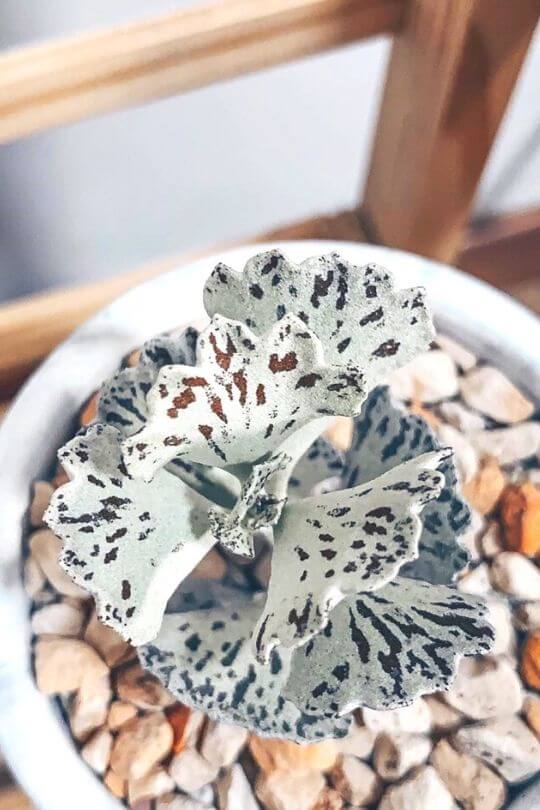
Still looking for that weird looking wonder plant for your terrarium? Look no further! Pies from heaven can turn even the most unimaginative terrarium into a small garden of originality and surprise…
It has, in fact, striking looking rosettes of leaves that start small and widen at the end, with a large and zigzagging or undulated outer edge.
To some, this shape may bring to mind the teeth of an open mouth of some strange marine creature.
But then, there is also the coloring… These leaves are of a pale grey shade with dark purple brown spots, which look a bit likes dabs of paint added on by some surreal artist.
20. Pregnant Onion (Albuca Bracteata)
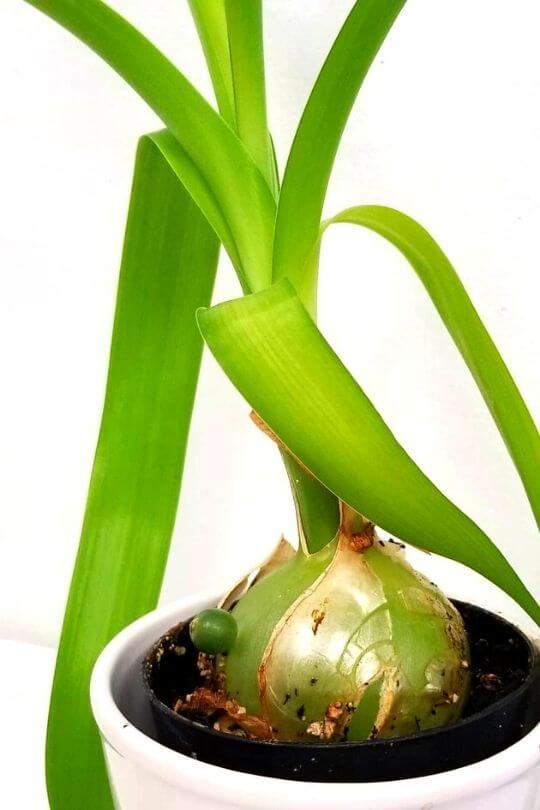
But terrariums are also the small gardens in glass where you want bold, strikingly sculptural shapes…
Pregnant onion, with a smooth, waxy texture, has an amazingly large above-ground light green bulb, smooth in texture, which looks like a ceramic pot…
On top of it, it will produce just a few, beautiful, waxy and arching long and rich leaves, which look like they are growing out of a round stone or jar…
Still going higher, when it blossoms, it will fill your terrarium with up to 300 (!!!) start shaped flowers with six white petals with light chartreuse green stripes in them.
Your Terrarium: A Green Message in a Bottle
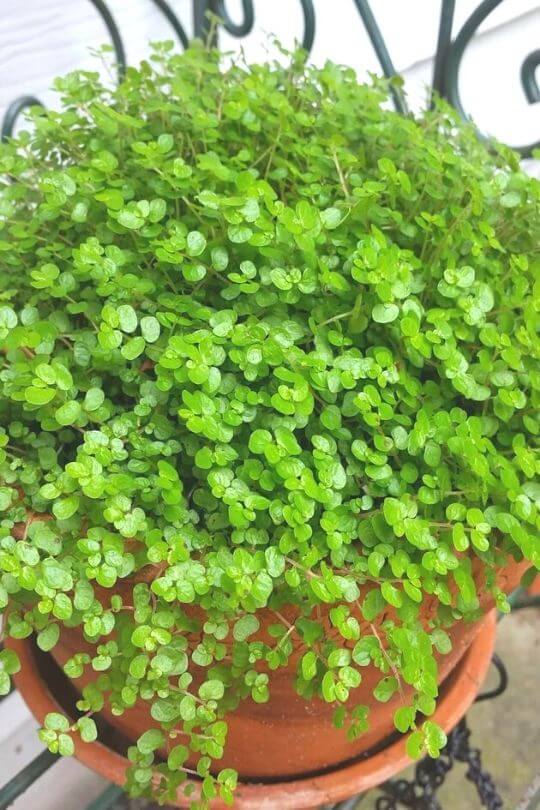
Keeping in mind the key distinction between open and close terrariums, there is a very wide choice of strikingly beautiful plants for your imagination to grow small gardens inspired by rain forests, desert scenes, leafy and shady temperate forests, underwater landscapes, outer space planets or, of course, fairy tales.
Put a bit of yourself, of your personality in your terrarium, add what your children like, choose original, unusual looking or every colorful plants, and Nature will help you write a green message in a bottle to express your artistic vision and – if you want – wow your guests too!

Written By
Amber Noyes
Amber Noyes was born and raised in a suburban California town, San Mateo. She holds a master’s degree in horticulture from the University of California as well as a BS in Biology from the University of San Francisco. With experience working on an organic farm, water conservation research, farmers’ markets, and plant nursery, she understands what makes plants thrive and how we can better understand the connection between microclimate and plant health. When she’s not on the land, Amber loves informing people of new ideas/things related to gardening, especially organic gardening, houseplants, and growing plants in a small space.

Thank you for an informative and interesting article.
Considering my first terrarium and your article is spurring me on.